Washington, DC is a popular destination for business, fun and learning. The capital of the United States is home to a massive collection of museums, monuments and history, most of which are free to see or enter.
In this post, we’ll be looking at six things you should see and do when visiting D.C. for a weekend.
But first, let me introduce you to DC itself.
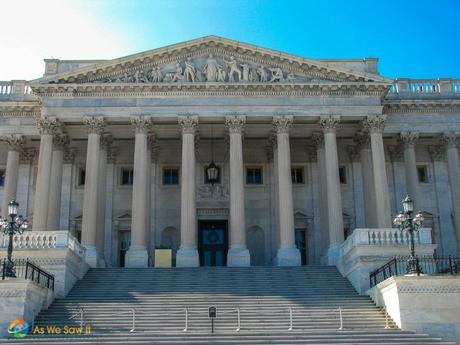
A (very) brief introduction to DC
Washington, DC is tucked between Virginia and Maryland, along the Potomac River, and is only 68.34 square miles. Thanks to its small size, it’s easy to navigate and explore the nation’s capital using the metro, which can expand out past the DC limits into Virginia and Maryland.
If you want to stay in DC, but don’t want to drive through the horrible traffic, stay in a hotel near the DC metro lines. This will make your life a lot easier and you’ll save some money too (as there are high parking rates in Washington itself!)
There’s also much more to DC than the Capitol Building and White House, as you’ll see by the end of this post.
So, without further ado, let’s get started!
Museums of National Mall
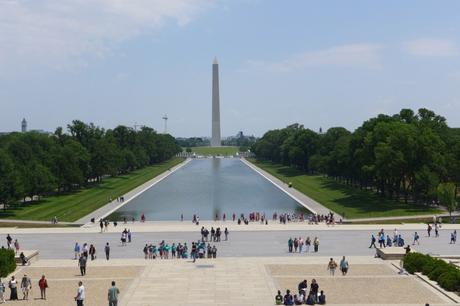
Now that you have a home base and a way to get around, my first suggestion for a weekend in Washington is to visit the National Mall.
And no, the National Mall isn’t a shopping mall.
Despite its name, it’s actually a huge park that extends from the Lincoln Memorial in the west, to the Capitol Building to the east, with tons of free museums and landmarks in-between.
This may seem like cheating, but all the museums are centrally located within the National Mall and are literally so close together that it’s easy to see all the museums in less than a full day (trust me). Plus, the variety of museums really caters to specific interests, which cuts down on time spent at each structure.
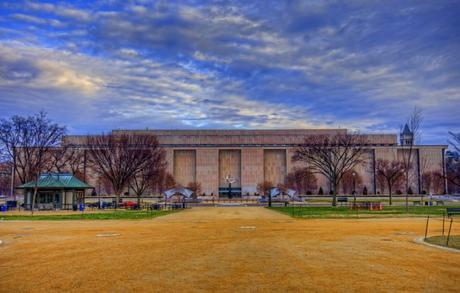
Some of these museums include:
- National Museum of American History
- National Museum of Natural History
- National Air and Space Museum
- National Gallery of Art
- National Museum of African American History and Culture
- National Museum of Asian Art
- US Botanic Gardens
- Enid A. Haupt Garden
- National Museum of the American Indian
- United States Holocaust Museum
- Smithsonian Castle
- Hirshhorn Museum and Sculpture Garden
- S. Bureau of Engraving and Printing
Many of these museums can be very crowded but the main benefit of being in the National Mall area is the fact that the next museum or garden is only a hop, skip and a jump away, and really caters to anyone’s preference whether it’s science, history or art.
Oh, and did I mention that they’re all totally free!?
The Capitol Building
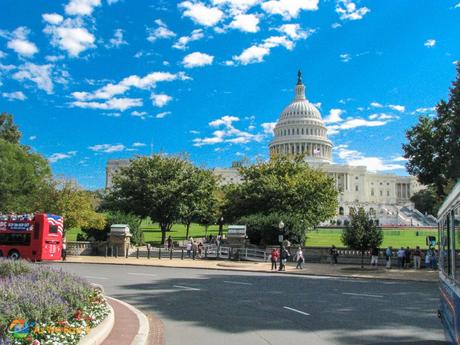
No visit to DC would be complete without a visit to the capitol building; it’s one of the most impressive and important buildings in the world. It houses the United States Congress, and serves as a meeting place for the House of Representatives.
One of the most interesting facts about the building is that its design began as a contest, proposed by Thomas Jefferson, with a prize of $500 (around $14,000 in today’s money).
After the design was chosen based on William Thornton’s entry, the Capitol Building has faced many hardships, changes and destruction before being rebuilt over and over, creating the symbolism of perseverance that the Capitol Building holds today. During the War of 1812, constant raids and fire nearly destroyed the building, if not for a lucky storm that put out the fires (which burned and gutted the inside of the building).
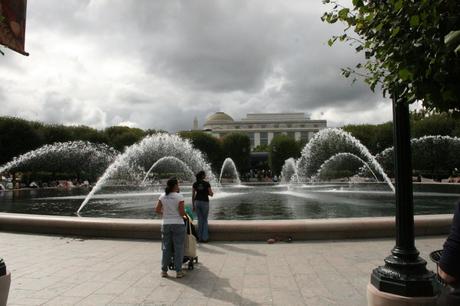
When walking up to the Capitol Building from the National Mall, it may be surprising that you actually see the back of the building, rather than the front. A little confusing, but it turns out the building entrance faced east (away from the National Mall) because at the time, the land was the most level in the east so it made more sense for travelers to go in that way (interesting, right!?).
A word of warning for those looking to visit, though: Tour spots fill up fast, so make sure to plan ahead and book a tour to avoid the massive crowds and long waits.
In the spring and summer, it’s almost impossible to get a same-day tour pass.
Washington Monument
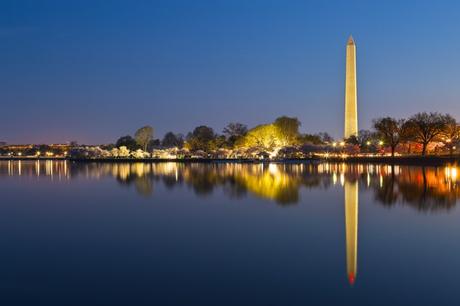
Travelling west from the National Mall, we have the infamous Washington Monument.
Even from a distance, you can see the 555 foot high obelisk dedicated to the first president of the United States. Up close, the obelisk is massive, with two shades of stone from the bottom half to the top half.
It turns out the monument dedicated to George Washington had undergone changes and trials of its own, just like with the Capitol Building.
Here are a few interesting facts about the monument:
- George Washington originally scrapped the idea of having a monument built for him, to save federal money.
- Plans for the monument started even before Washington was president, to commemorate when he was Commander-in-Chief of the American Army during the Revolutionary War.
- The design was originally set to look like a pantheon, or a temple building, with the obelisk in the center and huge statues surrounding it, until it was scrapped due to changes in architectural tastes.
- It took over 100 years for the monument to be completed.
One of the fun features of the monument is that you can go inside and take the elevator up to the observation deck for an incredible view of DC from 500 feet up.
There’s also a small museum dedicated the first president 10 feet below the observation deck. Unfortunately, the monument is currently closed to visitors to modernize the elevator inside. A tentative reopening is slotted for 2019.
Lincoln Memorial
The Lincoln Memorial is iconic as a symbol representing America’s beloved 16th president Abraham Lincoln and race relations.
With a large, seated Lincoln, the base houses an inscription of two of his most iconic speeches: the Gettysburg Address and his second inaugural address near the end of the civil war and slavery. Dr. Martin Luther King stated his famous “I Have a Dream” speech here.

Walking from the Washington Monument to the Lincoln Memorial, you pass by the reflecting pool full of ducks and geese. The water doesn’t smell too good, but it’s definitely picture worthy from either end. Reaching the base of the memorial, you’re greeted by tons of people, mostly tourists, taking pictures and relaxing on the steps.
Walking up the steps, you may find yourself feeling a little bit like Rocky (even though those steps are actually in Philadelphia). Greeted by Lincoln, the main structure is incredibly beautiful and gives a great view of the reflecting pool and the Washington Monument.
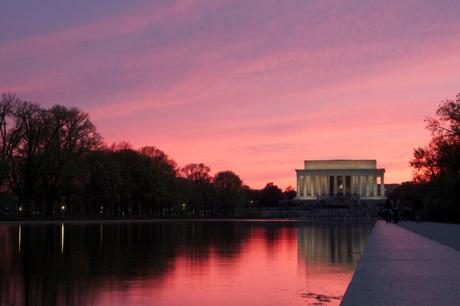
Even better, is seeing it at night, when the lights make the exterior glow and the inside lighting is brightest on the statue of Lincoln making it even more awe-inspiring and strangely calming.
(Just an FYI, security doesn’t allow anyone to have any beverages here so throw your water or soda away before you walk up the steps. Trust me.)
White House
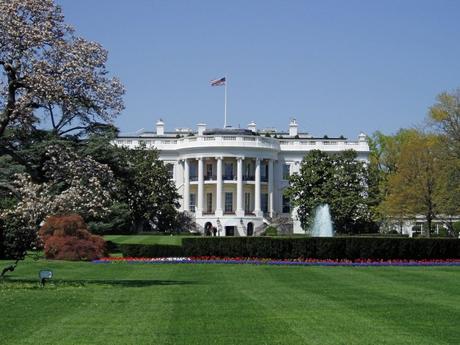
Although the White House is iconic, it really just warrants a quick visit to take some pictures. The building is beautiful in its own right, but for obvious reasons can’t be explored or visited. But, it wouldn’t be a trip to DC without visiting the White House and it does make for a great photo!
Arlington National Cemetery
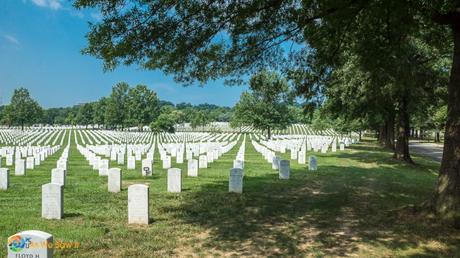
Just across the Lincoln Memorial on the other side of the Potomac River, is the Arlington National Cemetery.
Arlington Cemetery is the burial site of many historical figures and military personnel who continued to fight and pave the way for the freedom of the United States and its people.
Note: Arlington Cemetery is technically located in Arlington, Virginia, but like all Major DC. institutions, has a DC address.
If you’re planning a trip to DC and intend to stay in the outskirts, Arlington, Virginia is a convenient place to stay for cheaper hotels with easy access to metros to get into the heart of DC. (Hint: this is a fantastic way to save some money without really compromising on convenience).
When entering the cemetery, you’ll almost certainly be screened by security. The cemetery is run by the United States Department of the Army, and requires the security screenings for safety reasons. Nothing to worry about.
Arlington Cemetery is 624 acres with over 400,000 graves; so getting lost is very possible. Thankfully, starting at the welcome center, there’s the opportunity to grab a map and get a brief history lesson about the cemetery.
One of the most famous sites to visit at the Arlington Cemetery is the John F. Kennedy gravesite. The 35th president is one of two presidents to be buried in Arlington (the other being William Howard Taft). At his grave are plaques for him, his wife Jacqueline and their daughter; as well as the John F. Kennedy eternal flame.
The cemetery also houses the Arlington Memorial Amphitheater, a huge and beautiful amphitheater used for state funerals, speeches as well as Memorial Day and Veterans Day ceremonies. Connected to the amphitheater, is also the Tomb of the Unknowns (or Tomb of the Unknown Soldiers), dedicated to armed servicemen who died unidentified through military conflict.
The tomb is protected by guards 24/7 every day. It’s really quite a sight to see the dedication the soldiers have, and only a small percentage of soldiers are allowed to protect the tomb.
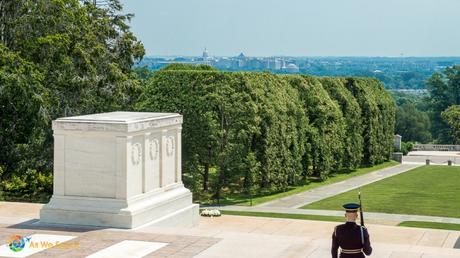
Surrounding the Amphitheater and Tomb of the Unknowns are:
- The Korean War Contemplative Bench
- Space Shuttle Columbia Memorial
- Audie Murphy Gravesite
- Joe Louis gravesite
- USS Maine Mast Memorial
- Joe Louis gravesite
One last interesting fact about Arlington National Cemetery is its designation as a Memorial Arboretum. Walking through the cemetery you’ll see thousands of different species of trees that scatter throughout the landscape, making the Arlington Cemetery an incredible sight in any season.
Whether in the spring, summer, fall or winter, there are always trees blooming with origins from all across the globe. For any nature lover, history buff, or avid sightseer, I can’t think of any place more humbling and beautiful as this cemetery.
Inspired?
Learn more about visiting these destinations online:
- National Mall – Official Site
- 14 Cant-Miss Free Museums on the National Mall
- U.S. Capitol – Official Site
- Washington Monument – Official Site
- Lincoln Memorial – Official Site
- The White House Tour – Official page
- Arlington National Cemetery – Official Site
Find a hotel near the DC Metro here.
About the author


